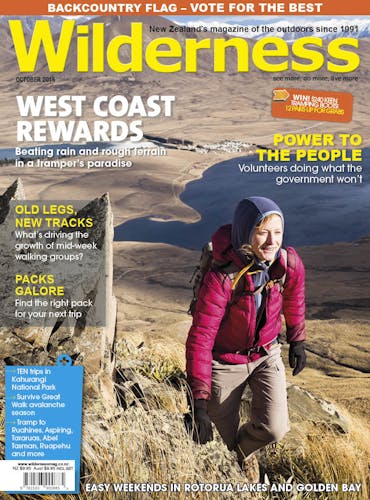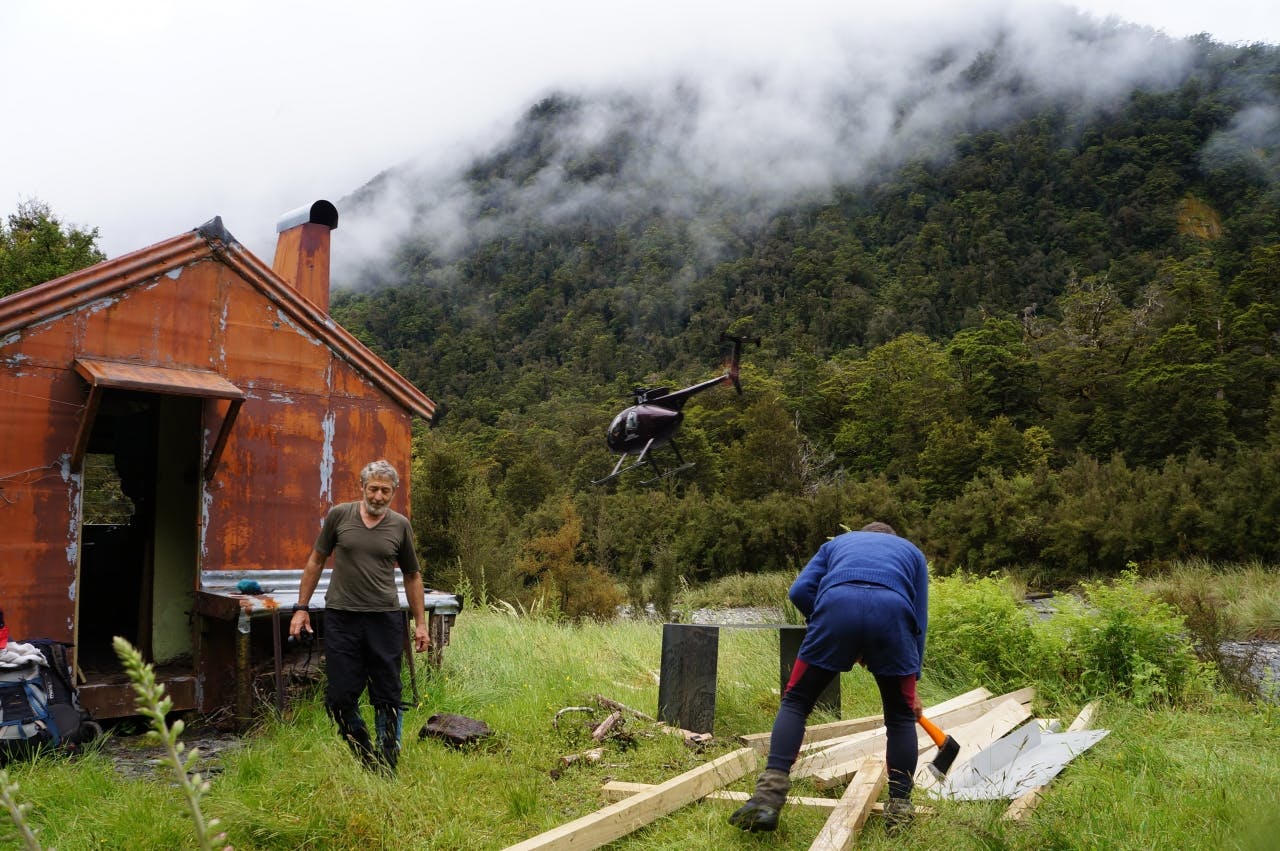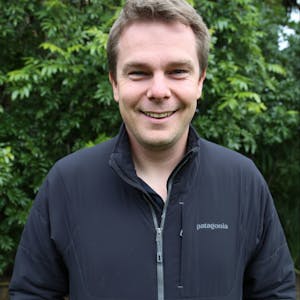A scheme giving volunteers the money to maintain their favourite huts and tracks has been running for more than a year. Matthew Pike finds out why the budget has been cut for year two
The route up was along a good ol’ backcountry track; nothing too steep, nothing too boggy, no foliage to brush out the way. It wasn’t the polished pavement of a Great Walk but it was well marked and fun to climb.
After two hours I caught up with the guys who’d just built it. Keen tramper Tony Walton was leading a group from Auckland and Howick tramping clubs. They’d set off from the big smoke early that morning for a weekend of cutting, hacking and sawing a continuation of the trail.
While most of the volunteers started work for the day, Walton continued up the hill with Warren Geraghty, a local DOC ranger sacrificing a day off to measure how much material needed to be dumped by helicopter to overcome the boggy patches on the ridge at the top.
I left them to it, heading left across the ridge. The going was pretty tough – relentlessly up and down with large patches of mud, cutty grass, branches and fallen trees blocking the path. It was a wholly different experience to the track I’d been on before, but it could have been worse; had I gone right, I was told, the terrain is so unforgiving I wouldn’t have made it to a hut that night.
I was on a section of the old North South Track, soon to become the Kaimai Ridgeway, in the Kaimai Range. I was relieved to learn that over the next few months, selfless volunteers from Auckland, Hamilton, Cambridge, Tauranga and other towns in the region, are going to make tramping here far more achievable.
The tramping and hunting clubs around these hills have got together to change Kaimai Mamaku Forest Park’s image of being rough and inaccessible. “A lot of people have been tramping up here and have spent a night outside when they weren’t expecting to because it takes too long, or because it’s easy to lose the line of a track,” says Walton, who believes the park could attract far more people.
One only needs to try and book Waitawheta Hut on a Saturday night – along one of the few easy walking tracks in the park – to realise the potential for this place. Rangers will tell you that, prior to Waitawheta becoming part of DOC’s hut booking system, they could see 80 people cram into the building for the night.
The clubs are all doing their bit – each covering different sections of the park – to transform the Kaimais into a place with a wide network of quality tracks with huts to match. It’s a five-year plan that would not have been possible without the $44,000 which has become available over the past 12 months.
The Community Conservation Partnerships Fund (CCPF) is a DOC initiative to support volunteers who want to do their bit to improve their little corner of New Zealand. It has promised $26 million to community conservation and recreation groups over a four-year period. Part of this money goes to the Outdoor Recreation Consortium, a group specifically representing the backcountry, mainly benefitting trampers, cyclists and hunters, but also helping the likes of horse riders and 4WD groups.
This money will never be used to spruce up the likes of Anchorage Hut on the Abel Tasman, but if a volunteer wants to fill a hole in a leaking roof at Two Planks Hut at the end of Muddy Rough-As-Guts Tiger Country Track, they’ll have a far better chance of receiving a piece of the pie.
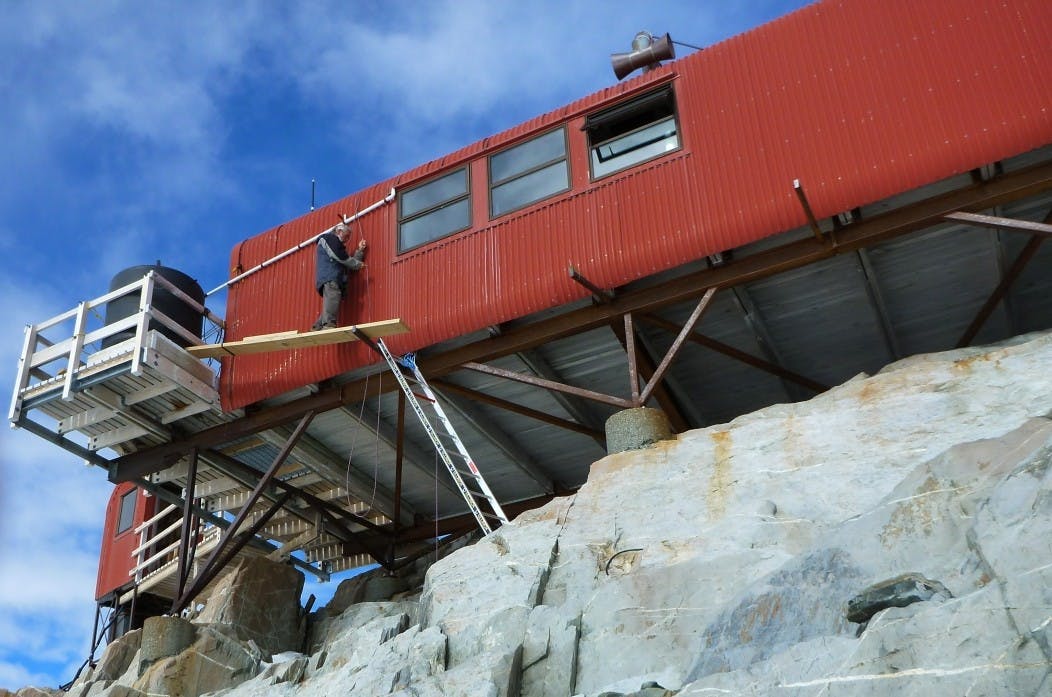
A NZAC volunteer repairs Centennial Hut. Photo: NZAC
The consortium, which consists of Federated Mountain Clubs, the Deerstalkers Association and Trail Fund NZ, received $700,000 in its first year. This money was dished out to volunteers who came forward with credible plans for projects that required funding to get off the ground. The money has been largely spent on purchasing materials, helicoptering materials into the backcountry and covering volunteer transport costs. It’s an efficient use of funds, says the New Zealand Alpine Club’s (NZAC) general manager Sam Newton.
“I think the money they’ve put into CCPF is money very well spent because of the multiplier effect,” he says. “For every dollar you spend in CCPF you get five or six dollars worth out of it because the volunteers are working for free.”
NZAC has seen the benefits of CCPF funding for numerous projects, including $40,000 for the new Beatham Hut (half way up the Tasman Glacier), and more funds for maintenance work on a range of buildings including Centennial, Homer and Ruapehu huts.
“It’s easier to get volunteers when costs are covered – just so they’re not out of pocket,” says Newton. “People love working on the huts – they get a real buzz from it. CCPF also legitimises it. I guess people have always been free to voluntarily maintain huts and tracks, but this process gives a mandate and lends legitimacy.”
Tony Walton, of Auckland Tramping Club, says the scheme has, without doubt, encouraged volunteers to come forward and spend their weekends hacking away in the Kaimais.
“It has encouraged a lot of people to get out there – they feel a sense of ownership for the tracks.”
Walton believes the five-year plan to transform the forest park would not have got off the ground without the funding.
“It would have been to a lot smaller scale,” he explains. “And it’s not just the CCPF; it’s the understanding from DOC that volunteer involvement is an essential part of what needs to be done.” Walton says in the past DOC would become protective over its responsibilities and dissuade public involvement. “They felt potentially liable for anyone who hurt themselves on a tramping trip. But our agreement means it’s up to us to make sure a group has the right gear and to cancel if the weather’s bad.”
Geoff Spearpoint is one who has benefitted from the department’s change of approach. For a number of years he’s been repairing the previously dishevelled Tunnel Creek Hut, in Westland – a pastime he has found thoroughly rewarding.
His plan was to work on that hut alone, spending his own cash. But when he heard about the funding opportunities, he realised he could work on more huts, as the money he spends gets reimbursed.
“The funding makes it practical. I don’t have thousands of dollars to spend fixing up huts. But with the fund, it means, if I can recover costs of materials and some of the transport costs, I can use that money for the next hut, the next hut, the next hut and so on.”
Spearpoint has been granted $3300 for his Tunnel Creek Hut project and believes the volunteer approach does more than save DOC a bit of cash. “It allows people with an association with a place to put something back,” he says. “It’s about getting to know your own place – a home away from home – and you develop a different connection by maintaining a hut.”
Spearpoint is a member of Permolat – a group of more than 200 enthusiasts who have, for a number of years, repaired remote backcountry huts and tracks. The group’s founder Andrew Buglass says getting the tracks cut is a vital component of keeping more remote huts alive.
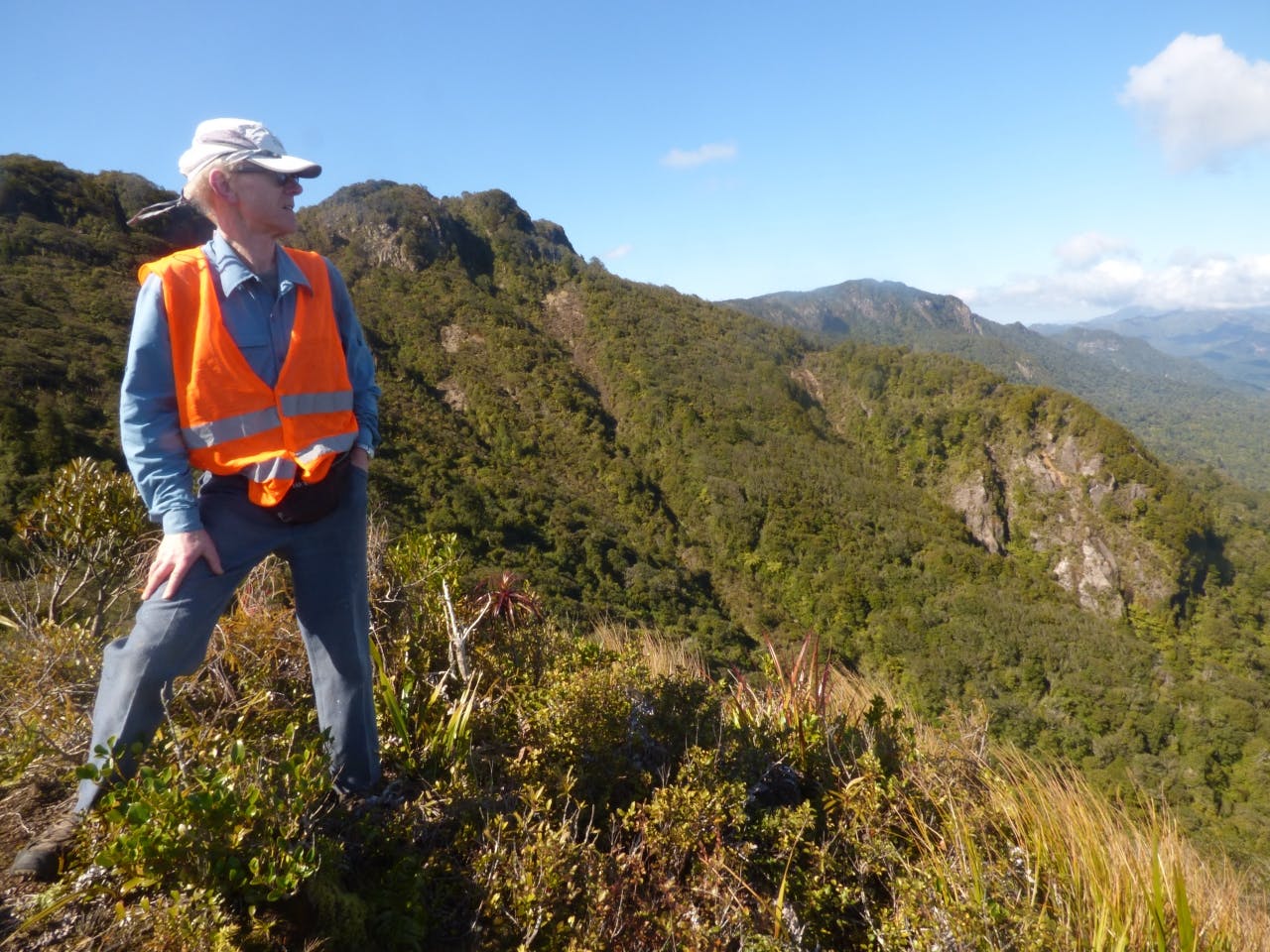
Auckland Tramping Club’s Tony Walden looks out from the Kaimai Range. Photo: Matthew Pike
“People tend to focus on the huts, but for us getting track systems open again was integral to maintaining the huts and continuing to have them used.” For Buglass, a key reason for huts being removed in the past was because they were too tough to get to. “In Hokitika, we’ve now opened up tracks up from Whitcombe Valley to the Mungo for the first time in nearly 40 years,” he explains.
Buglass believes the work they’re doing would still have been completed without CCPF funding, but it has made things so much quicker. “Last summer we did more huts and tracks than in any of the previous 10 years. It’s important work because you can’t leave a hut for too long – once it gets to a certain point, it’s difficult to fix or justify fixing it.
“The consortium’s sped up the process and allowed us to attend to more huts.”
Buglass says, rather than treading on DOC’s feet, the system has allowed a two-tier system to develop where DOC works on the front country projects while the consortium deals purely with the backcountry. “DOC wasn’t able to deal with the remote facilities anyway,” he says.
The wider benefits are very much at the forefront of Robin McNeill’s mind too. The FMC president says the scheme has not only worked wonders for relationships between backcountry enthusiasts and DOC, but it has also rekindled a turbulent relationship between the FMC and the Deerstalkers Association.
“In the past, we took a strong pro-1080 view and, at that stage, they didn’t. A number of their branches were members of FMC but by 1995 all had parted company.
“I’ve been wanting to rebuild that relationship with the deerstalkers for a long time and this has been the icing on the cake for me. We’ve realised we’re all wanting essentially the same thing, there’s not much we don’t agree on, and we can enjoy working with each other.
“Some of us have ice axes, some have rifles, and anyone who says their way is better than the other is just being arrogant.”
McNeill says the best volunteers are as good as the best staff at DOC when it comes to fixing up huts. “Some people restore old cars for a hobby, we prefer to restore old huts. People like volunteering; it makes them feel good.”
However, it’s not all good news. After receiving $700,000 in the first year, the consortium, after filing an expression of interest, was advised by DOC to ask for just $500,000 this year, which it has received.
McNeill says having to apply for less funding is disappointing but is due to the scheme’s success.
“We were given a clear signal less money would be available and, looking at it positively, it means the scheme’s been so successful other community groups will be interested in CCPF funds too.
“We didn’t have to turn down any reasonable project last year, but this year we may have to be more selective.”
Forest & Bird’s (F&B) Kevin Hackwell is happy to see recreation being given good support – and wants its funding to continue – but in future he would like to see CCPF funding more evenly spread with additional money going to conservation.
“We’re definitely not saying recreation shouldn’t get as much, but we’re disappointed the balance isn’t more even.”
Robin McNeill is well aware of tensions between how much should be spent on conservation and recreation, but believes there are long term conservation benefits in encouraging volunteers to work on huts and tracks in the hills.
“I believe people going into the hills can become the best advocates for conservation,” says McNeill. “If you’ve not experienced it, it’s difficult to advocate for it. The effects may not be immediate or obvious – it’s a long term benefit. Having said that, if biodiversity is disappearing in front of your eyes, we won’t have a long term.”
F&B’s Kevin Hackwell is also concerned that CCPF money may be used for conservation and recreation jobs that should be done by front line DOC staff. “It’s really important groups don’t put in bids for what should be front line conservation work – we don’t want another Cave Creek.
“We have to make sure we’re not replacing front line DOC staff, like with the takahe killings on Motutapu island. Should we be putting volunteers with guns into that situation?”
DOC’s Andy Thompson is the key contact for the recreation consortium. He says any work involving the likes of chainsaws, quad bikes and other potentially dangerous situations will be carried out by DOC staff, not volunteers. “Having said that,” he adds, “I’m aware of one group which has a very well trained chainsaw operator with all the industry tickets and we’re not going to say no to them.”
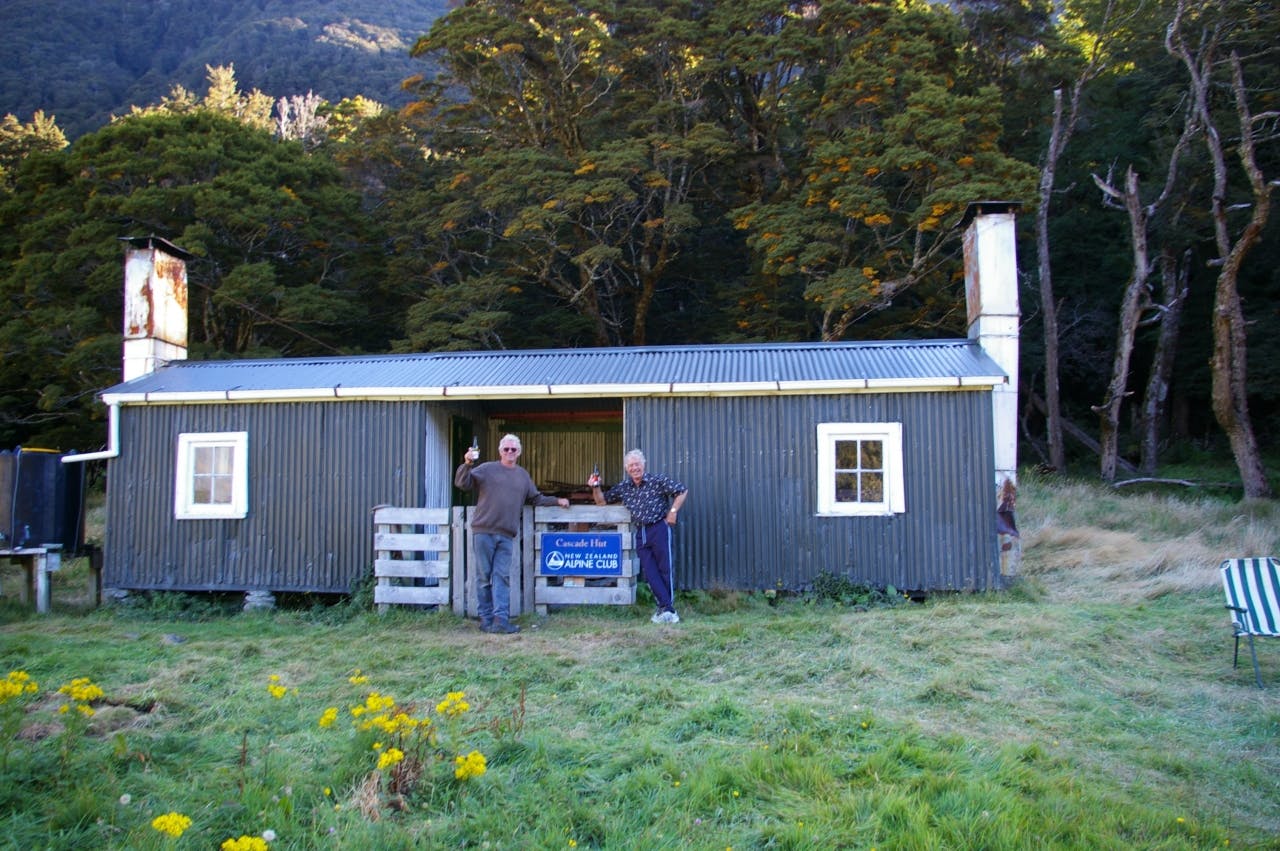
Celerbrating after a job well done at cascade hut, Mt Aspiring National Park. Photo: Martin Curtis/NZAC
Thompson explains that to ensure safety, volunteer groups need to sit with staff in their local DOC office, work through the scope of work they wish to undertake and go through application and health and safety forms. “We make sure volunteers are safe and, if there’s a tricky job on, we might send a ranger to assist.”
Thompson says he’s never had anyone suggest to him that money given to recreation would be better spent on conservation and believes the scheme has worked fantastically well, especially considering the first year was experimental.
“It’s been an absolute outstanding success. Based on the first year, it has worked brilliantly and I see no reason why we can’t continue in this way.”
DOC says an increase in applications from community groups has meant not all applicants would receive the full amount applied for this year.
NZAC’s Sam Newton hopes this trend of decline does not continue, believing a future reduction in funds to the consortium could be disastrous for New Zealand’s backcountry.
“Recreational assets would start declining again and all that volunteer potential would be lost. Volunteers will always be there but it needs to be matched with a little bit of funding or all that potential will be under-utilised.”
However, so long as the fund remains, Newton predicts a bright future for New Zealand’s remote huts and tracks. “I think most assets will remain. The model allows the market to speak, so if a hut or track is popular someone will volunteer in that space. It’s kind of a wisdom of the crowd phenomena; rather than arbitrary deskbound decisions, there’s a market force there.”
There can be few schemes devised by DOC that have been greeted with such widespread support, especially among the sometimes hard to please and often neglected backcountry enthusiasts.
All those Wilderness spoke to said the CCPF has ticked so many boxes in regards to efficiency of spending, partnership building and, most importantly, allowing the users of our backcountry to help determine its fate.
Got a project? Apply for money
If there’s a hut or track that’s dear to your heart and you feel you have the skill and the will to give it bit of TLC, you can apply for funding from the Outdoor Recreation Consortium.
Here’s how:
- Visit hutsandtracks.org.nz
- Click the ‘apply now’ link at the top
- Apply using the downloadable application form and guidelines
- The current round of funding applications closes on November 13





